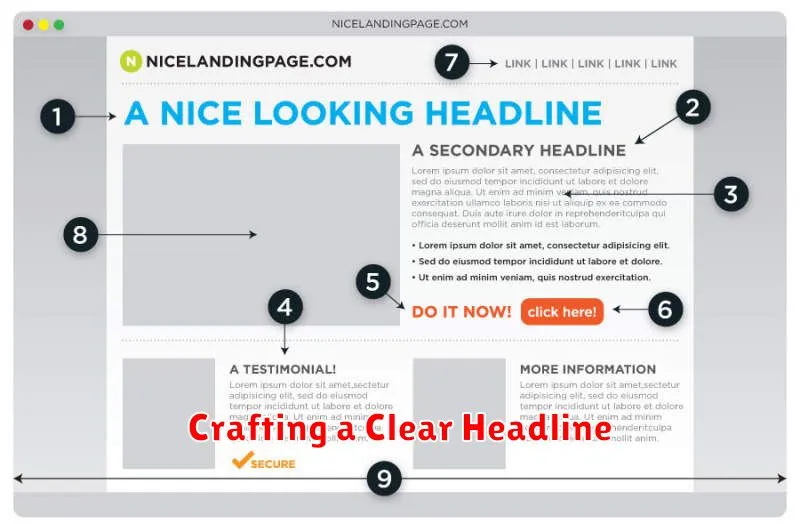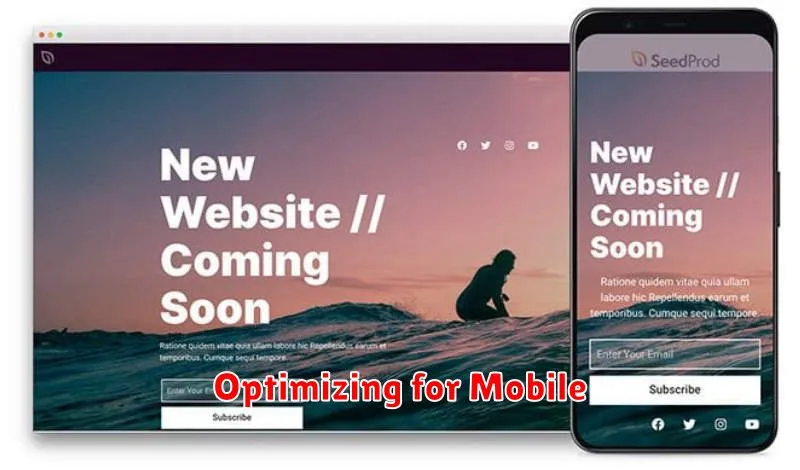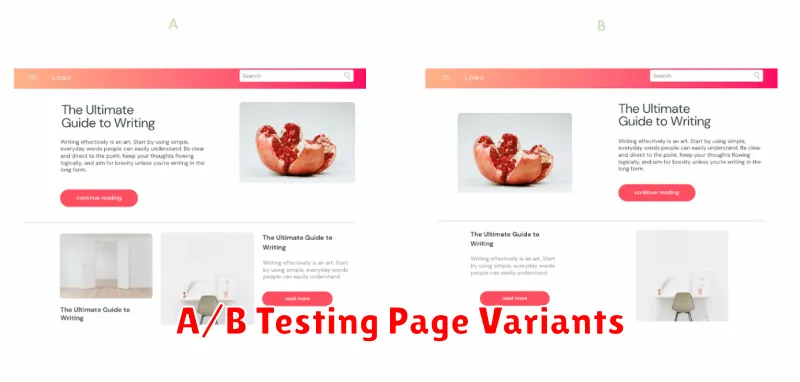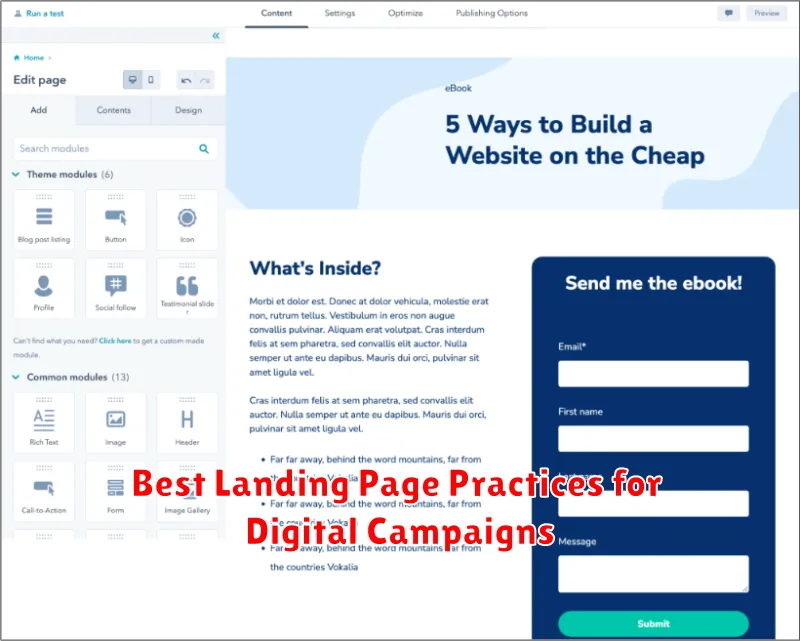In the competitive landscape of digital marketing, a high-performing landing page is paramount to the success of any campaign. Landing pages serve as the crucial bridge between attracting potential customers and converting them into valuable leads. This article will explore best practices for crafting landing pages that are optimized for conversions, ultimately maximizing the return on investment (ROI) of your digital campaigns. From compelling headlines and clear calls to action to streamlined design and persuasive copy, we will delve into the key elements that contribute to a successful landing page experience.
By implementing these best practices, you can transform your landing pages from simple web pages into powerful lead generation tools. This guide will cover essential aspects of landing page optimization, including A/B testing, mobile responsiveness, and data analysis. Learn how to create landing pages that effectively target your audience, communicate value propositions clearly, and drive desired actions, ultimately leading to improved digital campaign performance. Whether you’re running digital campaigns for lead generation, e-commerce sales, or brand awareness, understanding these principles is critical for success.
Crafting a Clear Headline

Your headline is the first, and often only, impression you make on a potential customer. A compelling and clear headline is crucial for grabbing attention and enticing visitors to explore your landing page further. It should instantly communicate the value proposition of your offer and resonate with your target audience’s needs and desires.
Focus on conveying a single, core message. Avoid ambiguity and jargon. Instead, use concise and impactful language that clearly articulates the benefit of your product or service.
Consider using numbers or data to add credibility and specificity to your headline. For instance, “Increase Conversion Rates by 20%” is more compelling than “Improve Your Conversions.”
Finally, test different headlines to see which performs best. A/B testing allows you to experiment with variations and identify the most effective approach for your target audience. Track key metrics such as click-through rates and conversion rates to determine the winning headline.
Using Persuasive CTA Buttons
Call-to-action (CTA) buttons are crucial for converting landing page visitors into leads or customers. A well-crafted CTA button encourages users to take the desired action.
Button Text: Avoid generic text like “Submit.” Instead, use action-oriented and benefit-driven language that clearly communicates the value proposition. Examples include “Get My Free Quote,” “Download Now,” or “Start Your Free Trial.”
Design and Placement: Make your CTA button visually prominent. Use contrasting colors that stand out against the background. Place the button above the fold, ensuring it’s easily visible without scrolling. Strategic placement within the page flow is also essential.
Size and Shape: Ensure the button is large enough to be easily clickable, especially on mobile devices. Experiment with different shapes, but avoid anything too unconventional that might confuse users.
Testing and Optimization: Regularly A/B test different CTA button variations to determine what resonates best with your target audience. Analyze click-through rates (CTR) and conversion rates to optimize button performance.
Optimizing for Mobile

In today’s mobile-first world, ensuring your landing page is fully optimized for mobile devices is no longer a luxury, but a necessity. A poor mobile experience can significantly impact your conversion rates. Users expect a seamless and intuitive experience regardless of the device they’re using.
Key aspects of mobile optimization include a responsive design that adapts to different screen sizes, fast loading speeds, and easy navigation. Streamline forms to minimize typing and ensure buttons are large enough to be easily tapped on a touchscreen.
Consider using a mobile-first indexing approach, where Google predominantly uses the mobile version of the content for indexing and ranking. This underscores the importance of prioritizing the mobile experience. Test your landing page on various devices and browsers to identify and fix any potential issues.
Fast Loading Speeds Matter
In the fast-paced digital world, page speed is paramount to the success of any landing page. Users expect near-instantaneous loading times. A slow-loading page can lead to high bounce rates, impacting your conversion rates and ultimately, your campaign’s ROI.
Every second counts. A delay of even a few seconds can significantly increase the likelihood of a user abandoning your page. This is especially true for mobile users, who often have less patience for slow-loading websites.
Several factors contribute to page load times, including image sizes, server response times, and the complexity of your website’s code. Optimizing these elements is crucial for ensuring a smooth and engaging user experience.
Test and refine your landing page speed regularly using tools like Google PageSpeed Insights. Identifying and addressing bottlenecks will ensure optimal performance and contribute to a positive user journey.
A/B Testing Page Variants

A/B testing is a critical component of optimizing landing page performance. This process involves creating two or more versions (variants) of your landing page, each with slight variations in elements such as headlines, call-to-action buttons, images, or form fields.
These variants are then shown to different segments of your audience, and their performance is tracked and compared. Metrics like conversion rates, bounce rates, and time spent on page are used to determine which variant performs best. The winning variant is then implemented as the primary landing page, leading to improved campaign results.
Key elements to test include headlines, call-to-action button text and placement, form length and fields, and the overall layout and design of the page. Remember to test one element at a time to isolate the impact of each change.
Using A/B testing tools can streamline the process and provide statistically significant results. These tools can automate the variant rotation and data collection, allowing for data-driven decisions to optimize your landing page for maximum impact.
Minimizing Form Fields
One of the most critical aspects of landing page optimization is minimizing the number of form fields. Shorter forms typically result in higher conversion rates. Users are more likely to complete a simple form than a lengthy one that requires a significant time investment.
Only request the essential information absolutely necessary for the next stage of the campaign. Consider what data you truly need at this point in the user journey. Collecting additional information can be done later, once the lead is nurtured further down the sales funnel.
Think about how each field impacts the user experience. Every extra field adds friction. By reducing the number of fields, you reduce the barrier to entry and increase the likelihood of conversion.

